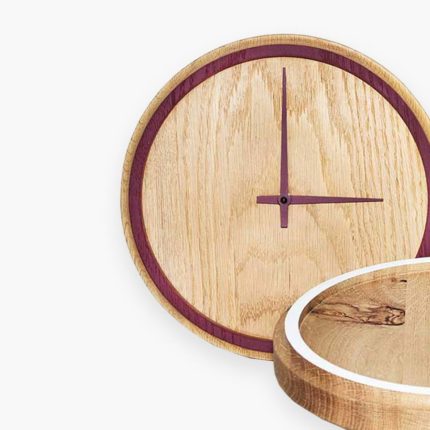There’s something quietly powerful about a clock. Unlike phones that buzz with distractions or smartwatches that nag us about step counts, a good clock simply tells time—elegantly, reliably, without demanding anything in return. Whether it’s the gentle tick of a wall clock in your living room, the authoritative presence of an office timepiece, or the soft glow of a bedside alarm, clocks do more than mark hours. They structure our lives, set rhythms, and even influence our moods.
The Psychology of Time: Why We Need Clocks
Ever notice how time feels different in a room without a clock? Minutes stretch or vanish. Deadlines sneak up. That’s because our brains are terrible at judging time unaided. Clocks act as external anchors—visual reminders that keep us grounded.
- Mechanical vs. Quartz Movements: A mechanical clock’s steady tick-tock (18,000 beats per hour in many models) creates a subconscious rhythm, almost like a heartbeat for your space. Quartz movements (battery-powered, with one tick per second) are more precise but lack that organic pulse.
- Digital vs. Analog: Studies show analog clocks help us feel time passing (watching the minute hand move makes us more aware of it), while digital displays encourage precision (good for offices, less soothing at home).
Clocks at Home: More Than Decor
A living room clock isn’t just functional—it’s a statement. A oversized farmhouse clock says slow down, while a sleek, silent atomic clock whispers modern efficiency.
- The 10-Foot Rule: Place clocks where they’re easily visible from across the room. (Pro tip: Avoid hanging them too high—eye level or slightly above is ideal.)
- Nightstand Clocks: Opt for dimmable LED or projection clocks. The blue light from cheap digital displays can disrupt sleep, so warmer tones (under 3000K) are best.
Office Clocks: The Silent Productivity Partner
In workplaces, clocks aren’t decorative—they’re tactical.
- Atomic Accuracy: Radio-controlled clocks (like those synced to NIST in the U.S.) auto-adjust for daylight savings and never drift. Critical for meetings and deadlines.
- The 20-Minute Visual Rule: Position a clock so employees can see it without turning their heads. This reduces “time-checking” distractions.
Grandfather Clocks & The Art of Patience
The deep chime of a grandfather clock (often Westminster or Whittington melodies) does something rare in our frantic world: it makes us wait. Each strike is a reminder that some things—good wine, hard work, meaningful relationships—can’t be rushed.
- Pendulum Physics: A 39-inch pendulum beats exactly once per second (a “seconds pendulum”), the traditional rhythm of these clocks.
- Weight-Driven vs. Spring-Driven: Older models use descending weights (lasting 7-30 days per wind), while modern versions may use springs or even batteries.
The Future of Timekeeping
Smart clocks now integrate with calendars, but the classics endure. Why? Because glancing at a beautifully crafted clock feels like checking in with an old friend—not a boss.
Final Thought
Next time you pass a clock, pause. Listen to its rhythm. Notice its design. That’s not just a timekeeper—it’s the quiet conductor of your day’s symphony.

